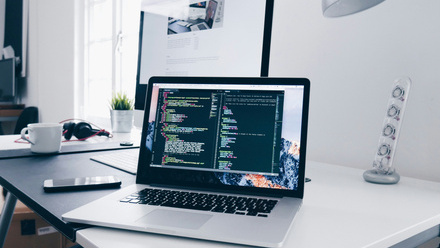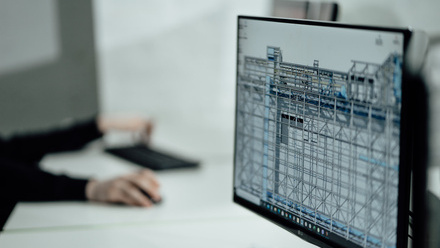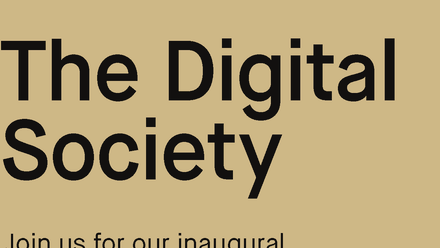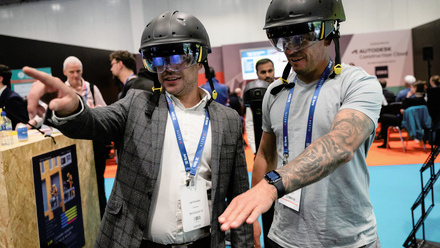What does the rise of AI mean for Architectural Technologists?
Evangelists of the technology will tell you about the enormous efficiency and productivity gains firms could see if they were to automate the most labour-intensive tasks using AI. At the same time, others worry that it could spell the end of technical proficiency and creativity, and ultimately lead to job losses. They may be concerned too that the next generation will not develop the necessary skills if they don't go through the same painstaking processes at the design stage.
Many firms will by now have played around with generative AI tools, like ChatGPT, DALL-E and Midjourney, and some will have already embedded it in their daily workflows. Back in April, studio principal at Zaha Hadid Architects Patrik Schumacher said he was encouraging experimentation with AI during ideation. This has already resulted in 'interesting ideas and new kinds of form and moves' – and allowed the team to work more closely with each other and clients, sharing early iterations and generating ideas together.
We know too from our own conversations with firms how valuable AI could be. In our recent report, Jack Cole, head of automation and computational design at Stephen George + Partners LLP, says it could drastically reduce the time spent on routine tasks. For Dave Moyes, a partner at SimpsonHaugh, the power of AI lies in its decision-making capabilities, as well as its potential to reduce admin. With better-quality information available, professionals are able to choose the right materials for assets and design them in a way more suited to their context.
Should we be worried though?
It is difficult to argue with any of this, of course. As an Architectural Technologist, you have been at the sharp end of developments like CAD and BIM, which have shaped today's industry. Still, the recent advances in AI also taps into existential questions about what it means to be a skilled professional in today's world. According to one expert, 'AI is already beyond what human designers are capable of' – so we are left wondering what threat this poses to those who have spent years training and developing their expertise.
Fear of mass job losses due to AI are rippling through every industry, not just architecture. If anyone can automatically generate hyper-realistic images of buildings and cityscapes in seconds, then does the craft of technologists and architects become redundant? What is more, if AI is used without proper oversight, then it is easy to imagine a dystopian future of cookie-cutter buildings, with originality becoming diluted at every iteration.
There are also legal implications to consider, particularly around intellectual property (IP). We can see how someone might inadvertently infringe copyright because AI models have been trained using existing images. On the flipside, they may be the victim of copyright infringement themselves if their proprietary designs and commercially-sensitive information start to appear in AI-generated text and imagery. Currently, and unlike in most countries, UK law protects 'computer-generated works which do not have a human creator', so firms that see elements of their work produced elsewhere may have little recourse for legal action.
Human-led AI
All of these concerns are legitimate, given the power of the technology, and more questions and challenges will emerge as it becomes more widely-adopted and sophisticated.
For now, AI is no substitute for the human empathy that clients value when working with an Architectural Technologist, nor does it have the skills to delicately negotiate with stakeholders. It can speed up everyday processes – but in a tight labour market, it is unlikely to replace the need for professionals any time soon. While there is no room for complacency, AI, in its current form, is not capable of replacing entire tasks let alone people.
As Jack Cole points out in our report, AI visualisations may look good but without technical expertise, there is no way of knowing whether it is safe, compliant or meets planning requirements. Furthermore, there are currently technical limitations in AI imagery. Most generative image models are trained on 512 x 512px imagery (or 768 x 768px), which means skilled designers are still needed to upscale them. However, what we are already starting to see is synergy between AI and creative software, with automation being introduced at the right point to enhance creativity and professional knowledge.
Training the next generation
At the moment, architecture and other industries are relying on human expertise and oversight to ensure AI is used in an effective and responsible way.
But what about the next generation starting out on their careers? Most students will have at least experimented with the tools, and many will be using them in their academic work and other areas of their lives. While they may be adept at using AI, how can they develop the technical skills required if many entry-level tasks can now be automated.
Like Cole, Professor Wassim Jabi, from Cardiff University, also said in our report he believes that even though AI-generated designs are impressive, they 'do not necessarily adhere to architectural principles and can sometimes be deceptive.' What is more, AI risks making creators lazy. He argues there will always be a need for traditional skills that allow designers to identify the perhaps hidden problems with a design. That said, he says teaching staff at universities must embrace AI to ensure students learn to use it in the right way. Another concern is that firms will see AI as a way to reduce the number of younger people they employ but this is short-sighted.
For a start, this digitally-savvy generation can take the lead in showing the wider team how AI can be implemented and maximised. More importantly, firms that reduce their intake of career starters will eventually suffer from a loss of creativity and new ideas. It is therefore critical that young people are not only offered job opportunities but a chance to immerse themselves in the creative processes too, as their older counterparts were.
Final thoughts
When architect Manas Bhatia used AI to set out a vision for cities of the future – which comprised curved skyscrapers, decked with green plants – he said that anyone can use AI 'but they will not be able to achieve as good a result as a creative person.'
And perhaps this is the crux of it. The AI tools he used (ChatGPT and Midjourney) are freely available to everyone but non-professionals would surely have struggled to produce something with the same depth and creativity. He drew on this experience to design a building that would encourage natural ventilation to save energy. It is telling too that he refined his prompts almost 100 times to get the right result, which again, requires an expert eye.
How firms use AI will evolve over the coming months and years, and it will be interesting to see what innovations it drives in building design and project delivery. Conversely, as AI adoption increases, we may well see firms bring the human element to the fore to create the point of difference clients want to see.
This article first appeared in AT Journal issue 148






